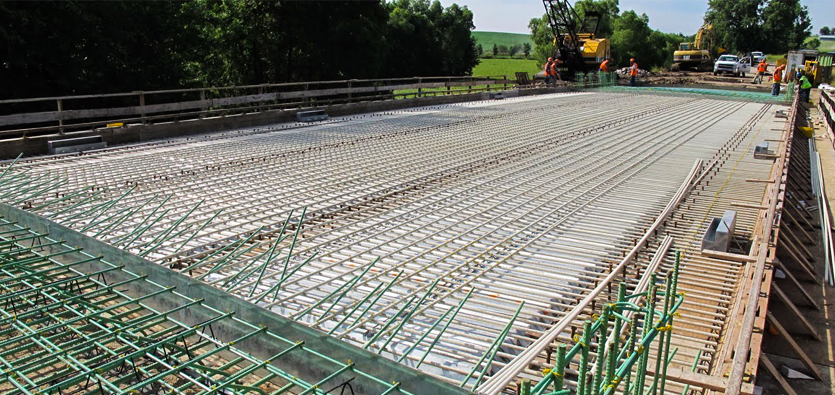Composites: Solid and Durable Construction Products
Composites: Solid and Durable Construction Products
Blog Article
Unlocking the Environmental Advantages of Recycled Composites in Building and Design
In the realm of building and construction and design, the application of recycled compounds holds considerable guarantee for enhancing sustainability practices and minimizing environmental effect. The change towards a much more sustainable future in these sectors hinges on unlocking the complete potential of recycled compounds.

Environmental Influence Reduction
The reduction of ecological impact with using recycled composites in construction and layout plays a vital role in lasting practices. By including recycled compounds right into building products, the building and construction industry can dramatically lower its carbon impact and add to a more environmentally friendly future. These sustainable products, made from repurposed plastics, wood fibers, or other recycled components, use a sensible option to traditional building and construction materials without endangering on quality or longevity.
Recycled compounds help divert waste from land fills and decrease the need for removing raw products, thus preserving natural sources. Additionally, the manufacturing process of these compounds usually eats less power and discharges less greenhouse gases contrasted to creating virgin products (composites). This shift towards using recycled composites not only lessens environmental injury however also promotes a circular economy by encouraging the reuse of products that would or else be discarded
Waste Minimization
With a concentrate on minimizing waste in building and design, the combination of recycled composites supplies a lasting remedy to lower ecological influence. Waste reduction is a vital facet of lasting practices, and making use of recycled composites provides a chance to achieve this objective properly. By utilizing products that have actually already offered their preliminary objective, such as recycled plastics or redeemed wood fibers, the construction and design markets can substantially reduce the amount of waste generated and sent to land fills.
Recycled compounds have the prospective to divert substantial quantities of waste from standard disposal approaches, adding to a much more round economy where resources are used efficiently. Additionally, the production procedure of recycled composites frequently takes in less energy and produces less emissions contrasted to virgin products, additionally lowering the environmental impact of building and construction and layout jobs.
Executing waste reduction approaches with the unification of recycled compounds not only aids in conserving natural deposits but likewise promotes a much more sustainable technique to building and making for a greener future.
Energy Conservation
Incorporating recycled compounds not only reduces waste in building and style but also plays an essential function in enhancing power conservation methods within the industry. Making use of recycled composites in building can considerably add to energy conservation with various methods. First of all, the manufacturing of virgin products generally needs significant energy inputs, whereas making use of recycled composites eats much less power, thus minimizing general energy usage. Furthermore, integrating recycled compounds can add to better insulation buildings in structures, decreasing the requirement for excessive heating or cooling, and as a result lowering power use for environment control. The light-weight nature of many recycled composites can lead to lighter frameworks, requiring much less power for transport and installment. By advertising the use of recycled compounds in building and construction and design, the sector can make substantial strides in the direction of achieving power effectiveness and minimizing its carbon impact, eventually adding to an extra lasting constructed atmosphere.
Carbon Impact Decrease
Enhancing sustainability techniques via the usage of recycled composites in construction and design considerably decreases the carbon impact of the industry. By incorporating recycled products into the manufacturing of composites, the need for virgin resources decreases, causing lower energy consumption learn this here now and greenhouse gas emissions related to typical manufacturing processes. This decrease in carbon impact is essential in combating environment adjustment and advertising a much more ecologically friendly approach to construction and layout.
Moreover, making use of recycled composites also helps in diverting waste from landfills, thereby mitigating the environmental effect of disposal and advertising a round economic climate. The carbon footprint decrease attained through the fostering of recycled composites aligns with the worldwide push in the direction of sustainable techniques and the reduction of industrial discharges. It showcases a commitment to responsible source management and a shift in the direction of greener alternatives in the construction and style markets. Eventually, by focusing on the integration of recycled composites, the sector can make considerable strides in reducing its carbon footprint and adding to a more lasting future.
Sustainable Future
The combination of recycled compounds in construction and style not only addresses instant environmental concerns yet additionally lays a strong structure for a lasting future in the industry. By including recycled compounds into building products and items, the building and layout fields can dramatically minimize their reliance on virgin sources, causing an extra round economic climate. This shift towards sustainability is crucial for mitigating the ecological influence of typical building techniques, which usually result in high degrees of waste generation and resource depletion.

Conclusion
To conclude, recycled composites provide significant environmental benefits in construction and style by decreasing environmental impact, useful content reducing waste, preserving energy, reducing carbon impact, and advertising a sustainable future. Welcoming making use of recycled composites can add to an extra environmentally-friendly technique to building and layout, inevitably leading to a much more lasting and greener future for all.
The reduction of environmental impact through the use of recycled composites in building and construction and layout plays a critical role in lasting techniques.With a focus on lessening waste in construction and style, the combination of recycled composites uses a sustainable remedy to lower environmental effect. By advertising the usage of recycled compounds in check out this site construction and style, the sector can make significant strides in the direction of achieving power efficiency and minimizing its carbon impact, ultimately adding to an extra sustainable built environment.

Report this page